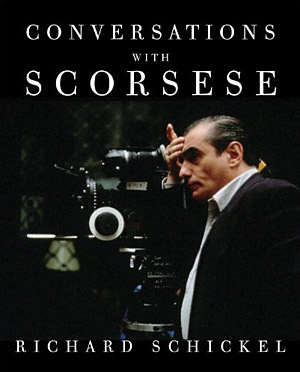I’m not surprised Shutter Island has put people off. It’s bombastic, loud, prone to hysteria, and engaged with the sort of horror hokum we want to think Martin Scorsese – our most popular highbrow filmmaker – is too good for. To be frank, some scenes clank. Others are embarrassingly operatic, and a few too many moments stumble into kitsch (“He’s in here. I can feel it.“), but the gestalt is insidiously addictive.
Attribute it to Scorsese’s deft handling of noir-like flashbacks and horror-type fantasies, which he fuses to induce that place of semi-consciousness between vivid recall and total insanity. It is a state of mind perfectly suited to America of the mid-fifties – not coincidentally the time-setting for Shutter Island – when post-war trauma, McCarthyism, and the pressure to keep it all together were making a paranoid mess of those the nation once counted amongst its sane.

With material such as this, it’s no wonder Scorsese isn’t shy about going all out. Maybe Michael Haneke would have played it closer to the vest, but when was the last time the director of films as visceral as Raging Bull and Goodfellas traded in whip-pans and splattered blood for a feathery touch? (Even The Age of Innocence is exploding with cinematic guts.) More than that, when was the last time insanity was ever depicted as polite?
Don’t worry, I didn’t ruin anything. From the word “asylum,” we should have a pretty good sense of what’s at stake for our main character. And anyway, the surprises – and there are many – have less to do with twists and turns in the plot than watching Scorsese re-explore one of his favorite subjects – this time with new eyes. Here, in the realm of noir and horror, genres that lend themselves to surreal breaks from objectivity, he can indulge his flamboyance to the nth degree, continuing to build, quite logically, on a sequence of madness that started way back with Taxi Driver, and expanded to include Cape Fear, Bringing Out the Dead, and The Aviator (with side trips to After Hours and The King of Comedy along the way).
Scorsese’s invocation of madness in Shutter Island is as satisfying as anything he’s filmed in twenty years. The Departed was a good time too, and so was Casino, but neither did much to grow the director beyond the walls of his comfort zone. Shutter Island, on the other hand, pushes our conception of Scorsese to the brink. It tests him, and he comes out the cleverer for it, proving that he has what it takes to navigate through the film’s several timeframes and planes of consciousness both the old fashioned way – with a system of symbols triggering the narrative from one association to the next – just as he and his editor, the amazing Thelma Schoonmacher, shuffle us through a trick deck of visual sleights of hand. Like something out of Vertigo, disorienting shifts between points of view – shots that begin (it seems) from one perspective and end up (it seems) from another – evoke the kind of psychological rupture lesser directors would fob off with cosmetic gimmicks, nutty angles, and (God help us) the standard hand-held effect (scary!).

But there’s more. In the midst of the fancy-footwork, the director proves, once again, that he knows where his characters’ hearts lie. Like all good films noirs, Shutter Island must eventually confront that moment of original sin, when, way back in the past, things started going wrong. When it comes time to show it, in keeping with everything else about Shutter Island, he isn’t afraid to pump up the volume. Scorsese knows there’s no trauma without trauma. Fearlessly, he conveys the wound with a seriousness that belies what many, myself included, consider the limitations of the thriller.
And in the midst of all this, Shutter Island happens to be one hell of a fun ride. If you’re anything like me, you’ll enjoy listening to the Coney Island clicks and creaks of the old rollercoaster as your wooden car makes its fateful way up.






